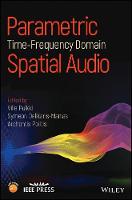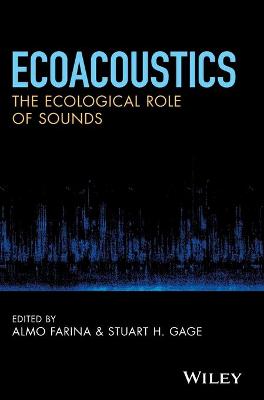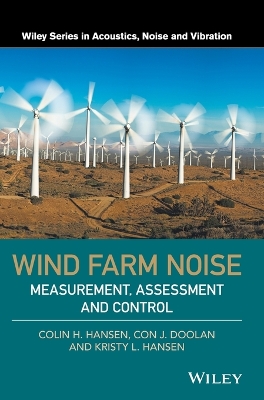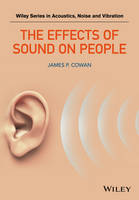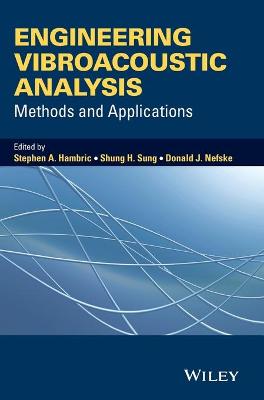Computational Acoustics
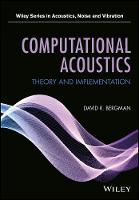 -15%
portes grátis
-15%
portes grátis
Computational Acoustics
Theory and Implementation
Bergman, David R.
John Wiley & Sons Inc
02/2018
304
Dura
Inglês
9781119277286
15 a 20 dias
684
1 Introduction 1
2 Computation and Related Topics 5
2.1 Floating-Point Numbers 5
2.1.1 Representations of Numbers 5
2.1.2 Floating-Point Numbers 7
2.2 Computational Cost 9
2.3 Fidelity 11
2.4 Code Development 12
2.5 List of Open-Source Tools 16
2.6 Exercises 17
References 17
3 Derivation of the Wave Equation 19
3.1 Introduction 19
3.2 General Properties of Waves 20
3.3 One-Dimensional Waves on a String 23
3.4 Waves in Elastic Solids 26
3.5 Waves in Ideal Fluids 29
3.5.1 Setting Up the Derivation 29
3.5.2 A Simple Example 30
3.5.3 Linearized Equations 31
3.5.4 A Second-Order Equation from Differentiation 33
3.5.5 A Second-Order Equation from a Velocity Potential 34
3.5.6 Second-Order Equation without Perturbations 36
3.5.7 Special Form of the Operator 36
3.5.8 Discussion Regarding Fluid Acoustics 40
3.6 Thin Rods and Plates 41
3.7 Phonons 42
3.8 Tensors Lite 42
3.9 Exercises 48
References 48
4 Methods for Solving the Wave Equation 49
4.1 Introduction 49
4.2 Method of Characteristics 49
4.3 Separation of Variables 56
4.4 Homogeneous Solution in Separable Coordinates 57
4.4.1 Cartesian Coordinates 58
4.4.2 Cylindrical Coordinates 59
4.4.3 Spherical Coordinates 61
4.5 Boundary Conditions 63
4.6 Representing Functions with the Homogeneous Solutions 67
4.7 Green's Function 70
4.7.1 Green's Function in Free Space 70
4.7.2 Mode Expansion of Green's Functions 72
4.8 Method of Images 76
4.9 Comparison of Modes to Images 81
4.10 Exercises 82
References 82
5 Wave Propagation 85
5.1 Introduction 85
5.2 Fourier Decomposition and Synthesis 85
5.3 Dispersion 88
5.4 Transmission and Reflection 90
5.5 Attenuation 96
5.6 Exercises 97
References 97
6 Normal Modes 99
6.1 Introduction 99
6.2 Mode Theory 100
6.3 Profile Models 101
6.4 Analytic Examples 105
6.4.1 Example 1: Harmonic Oscillator 105
6.4.2 Example 2: Linear 108
6.5 Perturbation Theory 110
6.6 Multidimensional Problems and Degeneracy 118
6.7 Numerical Approach to Modes 120
6.7.1 Derivation of the Relaxation Equation 120
6.7.2 Boundary Conditions in the Relaxation Method 125
6.7.3 Initializing the Relaxation 127
6.7.4 Stopping the Relaxation 128
6.8 Coupled Modes and the Pekeris Waveguide 129
6.8.1 Pekeris Waveguide 129
6.8.2 Coupled Modes 131
6.9 Exercises 135
References 135
7 Ray Theory 137
7.1 Introduction 137
7.2 High Frequency Expansion of the Wave Equation 138
7.2.1 Eikonal Equation and Ray Paths 139
7.2.2 Paraxial Rays 140
7.3 Amplitude 144
7.4 Ray Path Integrals 145
7.5 Building a Field from Rays 160
7.6 Numerical Approach to Ray Tracing 162
7.7 Complete Paraxial Ray Trace 168
7.8 Implementation Notes 170
7.9 Gaussian Beam Tracing 171
7.10 Exercises 173
References 174
8 Finite Difference and Finite Difference Time Domain 177
8.1 Introduction 177
8.2 Finite Difference 178
8.3 Time Domain 188
8.4 FDTD Representation of the Linear Wave Equation 193
8.5 Exercises 197
References 197
9 Parabolic Equation 199
9.1 Introduction 199
9.2 The Paraxial Approximation 199
9.3 Operator Factoring 201
9.4 Pauli Spin Matrices 204
9.5 Reduction of Order 205
9.5.1 The Pade Approximation 207
9.5.2 Phase Space Representation 208
9.5.3 Diagonalizing the Hamiltonian 209
9.6 Numerical Approach 210
9.7 Exercises 212
References 212
10 Finite Element Method 215
10.1 Introduction 215
10.2 The Finite Element Technique 216
10.3 Discretization of the Domain 218
10.3.1 One-Dimensional Domains 218
10.3.2 Two-Dimensional Domains 219
10.3.3 Three-Dimensional Domains 222
10.3.4 Using Gmsh 223
10.4 Defining Basis Elements 225
10.4.1 One-Dimensional Basis Elements 226
10.4.2 Two-Dimensional Basis Elements 227
10.4.3 Three-Dimensional Basis Elements 229
10.5 Expressing the Helmholtz Equation in the FEM Basis 232
10.6 Numerical Integration over Triangular and Tetrahedral Domains 234
10.6.1 Gaussian Quadrature 234
10.6.2 Integration over Triangular Domains 235
10.6.3 Integration over Tetrahedral Domains 239
10.7 Implementation Notes 240
10.8 Exercises 240
References 241
11 Boundary Element Method 243
11.1 Introduction 243
11.2 The Boundary Integral Equations 244
11.3 Discretization of the BIE 249
11.4 Basis Elements and Test Functions 253
11.5 Coupling Integrals 254
11.5.1 Derivation of Coupling Terms 254
11.5.2 Singularity Extraction 256
11.5.3 Evaluation of the Singular Part 260
11.5.3.1 Closed-Form Expression for the Singular Part of K 260
11.5.3.2 Method for Partial Analytic Evaluation 261
11.5.3.3 The Hypersingular Integral 266
11.6 Scattering from Closed Surfaces 267
11.7 Implementation Notes 269
11.8 Comments on Additional Techniques 271
11.8.1 Higher-Order Methods 271
11.8.2 Body of Revolution 272
11.9 Exercises 273
References 273
Index 275
1 Introduction 1
2 Computation and Related Topics 5
2.1 Floating-Point Numbers 5
2.1.1 Representations of Numbers 5
2.1.2 Floating-Point Numbers 7
2.2 Computational Cost 9
2.3 Fidelity 11
2.4 Code Development 12
2.5 List of Open-Source Tools 16
2.6 Exercises 17
References 17
3 Derivation of the Wave Equation 19
3.1 Introduction 19
3.2 General Properties of Waves 20
3.3 One-Dimensional Waves on a String 23
3.4 Waves in Elastic Solids 26
3.5 Waves in Ideal Fluids 29
3.5.1 Setting Up the Derivation 29
3.5.2 A Simple Example 30
3.5.3 Linearized Equations 31
3.5.4 A Second-Order Equation from Differentiation 33
3.5.5 A Second-Order Equation from a Velocity Potential 34
3.5.6 Second-Order Equation without Perturbations 36
3.5.7 Special Form of the Operator 36
3.5.8 Discussion Regarding Fluid Acoustics 40
3.6 Thin Rods and Plates 41
3.7 Phonons 42
3.8 Tensors Lite 42
3.9 Exercises 48
References 48
4 Methods for Solving the Wave Equation 49
4.1 Introduction 49
4.2 Method of Characteristics 49
4.3 Separation of Variables 56
4.4 Homogeneous Solution in Separable Coordinates 57
4.4.1 Cartesian Coordinates 58
4.4.2 Cylindrical Coordinates 59
4.4.3 Spherical Coordinates 61
4.5 Boundary Conditions 63
4.6 Representing Functions with the Homogeneous Solutions 67
4.7 Green's Function 70
4.7.1 Green's Function in Free Space 70
4.7.2 Mode Expansion of Green's Functions 72
4.8 Method of Images 76
4.9 Comparison of Modes to Images 81
4.10 Exercises 82
References 82
5 Wave Propagation 85
5.1 Introduction 85
5.2 Fourier Decomposition and Synthesis 85
5.3 Dispersion 88
5.4 Transmission and Reflection 90
5.5 Attenuation 96
5.6 Exercises 97
References 97
6 Normal Modes 99
6.1 Introduction 99
6.2 Mode Theory 100
6.3 Profile Models 101
6.4 Analytic Examples 105
6.4.1 Example 1: Harmonic Oscillator 105
6.4.2 Example 2: Linear 108
6.5 Perturbation Theory 110
6.6 Multidimensional Problems and Degeneracy 118
6.7 Numerical Approach to Modes 120
6.7.1 Derivation of the Relaxation Equation 120
6.7.2 Boundary Conditions in the Relaxation Method 125
6.7.3 Initializing the Relaxation 127
6.7.4 Stopping the Relaxation 128
6.8 Coupled Modes and the Pekeris Waveguide 129
6.8.1 Pekeris Waveguide 129
6.8.2 Coupled Modes 131
6.9 Exercises 135
References 135
7 Ray Theory 137
7.1 Introduction 137
7.2 High Frequency Expansion of the Wave Equation 138
7.2.1 Eikonal Equation and Ray Paths 139
7.2.2 Paraxial Rays 140
7.3 Amplitude 144
7.4 Ray Path Integrals 145
7.5 Building a Field from Rays 160
7.6 Numerical Approach to Ray Tracing 162
7.7 Complete Paraxial Ray Trace 168
7.8 Implementation Notes 170
7.9 Gaussian Beam Tracing 171
7.10 Exercises 173
References 174
8 Finite Difference and Finite Difference Time Domain 177
8.1 Introduction 177
8.2 Finite Difference 178
8.3 Time Domain 188
8.4 FDTD Representation of the Linear Wave Equation 193
8.5 Exercises 197
References 197
9 Parabolic Equation 199
9.1 Introduction 199
9.2 The Paraxial Approximation 199
9.3 Operator Factoring 201
9.4 Pauli Spin Matrices 204
9.5 Reduction of Order 205
9.5.1 The Pade Approximation 207
9.5.2 Phase Space Representation 208
9.5.3 Diagonalizing the Hamiltonian 209
9.6 Numerical Approach 210
9.7 Exercises 212
References 212
10 Finite Element Method 215
10.1 Introduction 215
10.2 The Finite Element Technique 216
10.3 Discretization of the Domain 218
10.3.1 One-Dimensional Domains 218
10.3.2 Two-Dimensional Domains 219
10.3.3 Three-Dimensional Domains 222
10.3.4 Using Gmsh 223
10.4 Defining Basis Elements 225
10.4.1 One-Dimensional Basis Elements 226
10.4.2 Two-Dimensional Basis Elements 227
10.4.3 Three-Dimensional Basis Elements 229
10.5 Expressing the Helmholtz Equation in the FEM Basis 232
10.6 Numerical Integration over Triangular and Tetrahedral Domains 234
10.6.1 Gaussian Quadrature 234
10.6.2 Integration over Triangular Domains 235
10.6.3 Integration over Tetrahedral Domains 239
10.7 Implementation Notes 240
10.8 Exercises 240
References 241
11 Boundary Element Method 243
11.1 Introduction 243
11.2 The Boundary Integral Equations 244
11.3 Discretization of the BIE 249
11.4 Basis Elements and Test Functions 253
11.5 Coupling Integrals 254
11.5.1 Derivation of Coupling Terms 254
11.5.2 Singularity Extraction 256
11.5.3 Evaluation of the Singular Part 260
11.5.3.1 Closed-Form Expression for the Singular Part of K 260
11.5.3.2 Method for Partial Analytic Evaluation 261
11.5.3.3 The Hypersingular Integral 266
11.6 Scattering from Closed Surfaces 267
11.7 Implementation Notes 269
11.8 Comments on Additional Techniques 271
11.8.1 Higher-Order Methods 271
11.8.2 Body of Revolution 272
11.9 Exercises 273
References 273
Index 275







